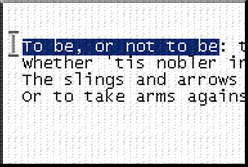 There is no doubt that a new generation of kids are growing up with the internet as a centerpiece of their lives. Whether it be on Twitter or Facebook, teenagers are expressing themselves more and more via the internet.
There is no doubt that a new generation of kids are growing up with the internet as a centerpiece of their lives. Whether it be on Twitter or Facebook, teenagers are expressing themselves more and more via the internet.
You can tell something is changing when news anchors are constantly ‘tweeting’ to reach a younger generation of viewers.
A recent Wired Magazine article by Clive Thompson discusses how a new generation’s writing style is changing:
“The first thing she found is that young people today write far more than any generation before them. That’s because so much socializing takes place online, and it almost always involves text. Of all the writing that the Stanford students did, a stunning 38 percent of it took place out of the classroom—life writing, as Lunsford calls it.”
Although various online venues are helping kids write more, they also may be promoting a wealth of bad habits when it comes to plagiarism.
Because information is so accessible and it is as simple as ‘copy-and-paste’ to grab an idea, the online generation is contributing to a growing trend in stealing other’s intellectual property without properly citing the work.
In a recent interview with MSNBC, iParadigm’s own Katie Povejsil, vice president of marketing, summed up the state of online plagiarism:
“One third of teenagers don’t believe that downloading a paper from the Internet is a serious offense. To them, copying text from a Web site is either a minor offense or it’s not cheating at all. That’s the world we find ourselves in and educators find themselves in.”
The scary thing is, these teenagers will grow up very soon and enter the workforce with the same distorted ethics.
These are the people who will be running our publishing, research, media and financial institutions. If their trend towards online plagiarism continues, we will be facing an even more difficult task in taking IP and content protection measures.
The first thing we need to do to prevent this from occuring is to educate kids from an early age about what plagiarism is. Resources like Plagiarism.org can provide some starting information on how to identify plagiarism as well on how to properly cite sources.
We also need to continue to try and find new ways to detect and prevent plagiarism. Our team at iThenticate has been working diligently to perfect our plagiarism software so that even in the worst case scenario we will be able to protect people’s intellectual property.
Overall, a digital world where a new generation can better express themselves is a good thing because it allows for important information and views to be shared across the web.
However, people also need to be held responsible with the protection of these ideas, as they are likely the intellectual property of an individual or company.
Citations:
Thompson, Clive. “Clive Thompson on the New Literacy.” Wired.com. 24 Aug. 2009 http://www.wired.com/techbiz/people/magazine/17-09/st_thompson
Related
Topics: Social Media,Academic